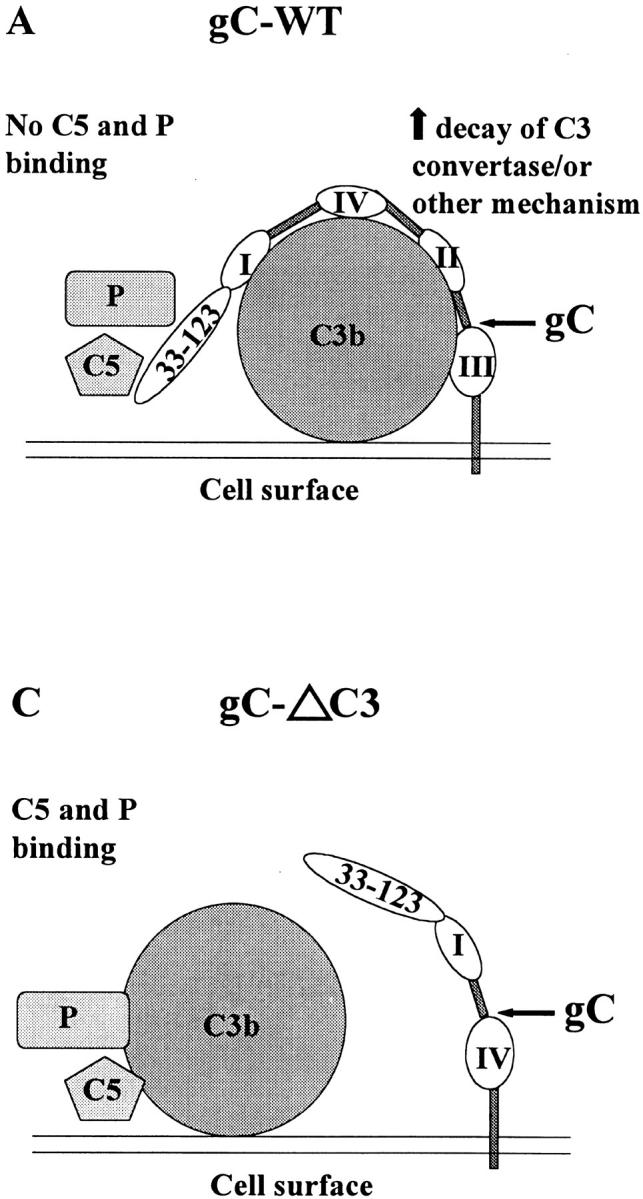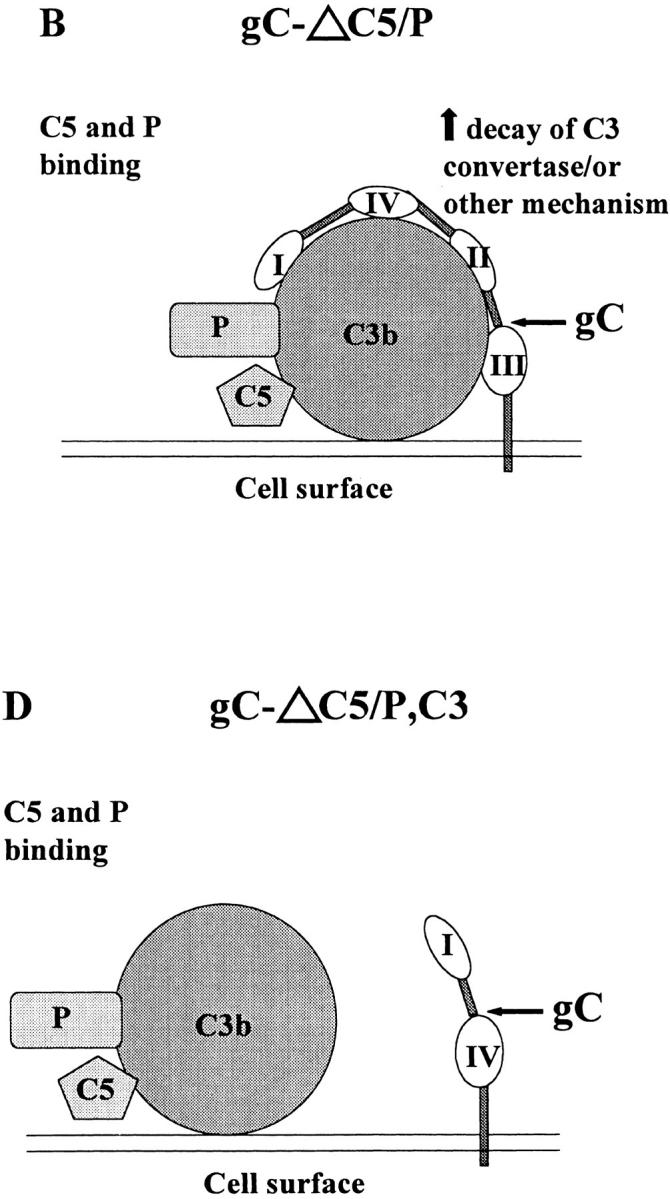Figure 8.


Models showing how gC domains that interact with complement block complement activation. (A) Wild-type gC: the cell surface activates the complement cascade, resulting in C3b fixation on the cell surface. gC regions I–IV bind to C3b, leading to accelerated decay of C3 convertase 20, or inhibit other C3-mediated activities, and the NH2 terminus C5/P blocking domain prevents the interaction of C5 and P with C3b 9 21. (B) gCΔC5/P: gC regions I–IV bind to C3b and inhibit complement activation as in A, whereas the absence of the C5/P blocking domain permits C5 and P binding to C3b, leading to increased complement activation. The net effect is partial inhibition of complement activation. (C) gCΔC3: gC does not bind to C3b; therefore, C3 convertase or other C3-mediated activities are not affected. The C5/P blocking domain is ineffective because it lacks proximity to C3b and cannot block C5 and P binding. The result is that gCΔC3 is as susceptible to complement as gCΔC5/P,C3, shown in D.
